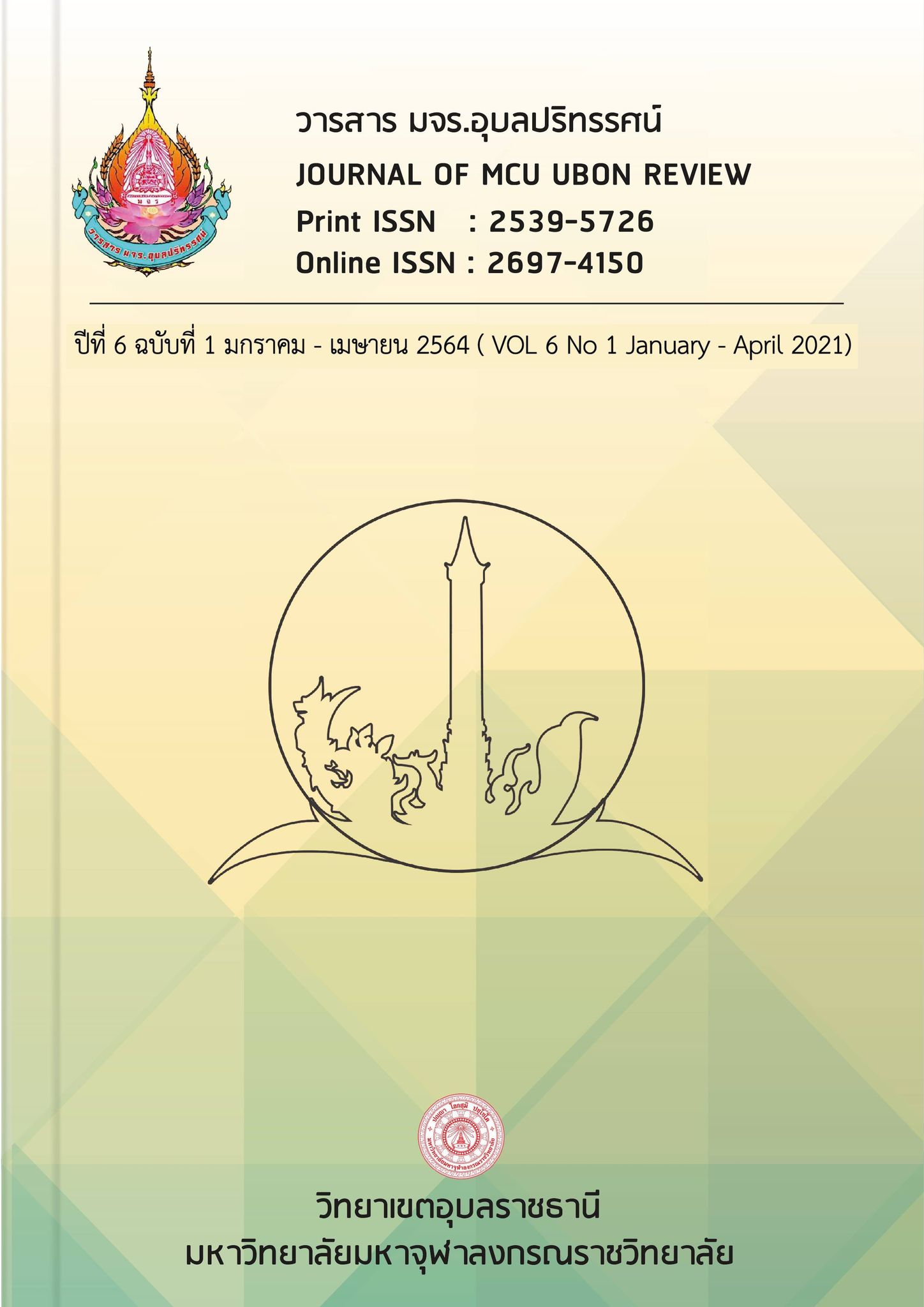DEVELOPMENT OF ASANA YOGA PROGRAM BASED ON BUDDHIST PSYCHOLOGY FOR ENHANCING ACTIVE AGING OF THE ELDERLY
Main Article Content
Abstract
The research on development of Asana Yoga Program based on Buddhist psychology for enhancing active aging of the elderly included the following objectives: 1) To study the asana yoga practice based on Buddhist Psychology for enhancing active aging of the elderly; 2) To develop Asana Yoga program based on Buddhist Psychology for enhancing active aging of the elderly; and 3) To present the Asana Yoga program based on Buddhist Psychology for enhancing active aging of the elderly. Mixed Methods were used in this research. The qualitative research was used to investigate how to integrate and apply psychology and Buddhist methodology in asana yoga practice and develop the asana yoga program based on Buddhist Psychology. Then the created program was experimented for enhancing active aging of elders and the result of the experimentation was assessed. The results of this research were as follows: 1. The Asana Yoga Program based on Buddhist psychology for enhancing active aging of the elderly was integrated with 3 major factors including: 1.1 Asana Yoga helped balancing a mindful bodily movement; 1.2 Psychological principles in positive health enhancement; 1.3 Buddha Dhamma principle of Bala 5 including Saddha (confidence), Viriya (effort), Sati (mindfulness), Samadhi (concentration) and Panna (wisdom) in order to balance the active aging in body, mind, social and intellectual that the elderly were able to: 1) take care of oneself in movement and routine work; 2) have a healthy mind and feel secured with mature emotion; 3) have a good social interactions within and outside the family; and 4) utilize their intellect for lifelong learning with patience and internal peace. 2. The development of Asana Yoga Program based on Buddhist psychology for enhancing active aging of the elderly was divided into 2 stages including: The first stage: training on adaptation in active ageing of 4 aspects taking 6 hours in 1 day; The second stage: practicing at home for 21 days with the length of 40 minutes a day. The program was consisted of 2 activities: Activity 1: body movement awareness as the principle of Luang Por Tien Chittasupo for 10 minutes i.e. for mindful bodily movement; Activity 2: awareness of balancing yoga i.e. asana yoga practice, concentration on movement, relaxation, balanced body with strait, stable and flexible posture that helped strengthening back muscles, support muscles and backbones and also simulated all organs within belly and chest to normally operate. This stage took 30 minutes. The program was demonstrated by 10 senior volunteers. After the participants had been skillfully trained, they practiced the program at home. This stage took 21 days. The researcher daily followed up the activity through video call every day at 7.00 p.m. every day. 3. The average opinion towards the Asana Yoga Program based on Buddhist psychology for enhancing active aging of the elderly in pre practicing the Asana Yoga Program based on Buddhist psychology for enhancing active aging of the elderly was higher than the post practicing. Health in 3 aspects was improved with significant statistics a 0.05 level. In addition, it was also found that 90 per cent of the participants continuously practiced and the Asana Yoga Program based on Buddhist psychology for enhancing active aging of the elderly became a part of their daily life.
Article Details
References
กายในผู้สูงอายุ. บัณฑิตวิทยาลัย, มหาวิทยาลัยเชียงใหม่.
มหาวิทยาลัยมหาจุฬาลงกรณราชวิทยาลัย. (2539). พระไตรปิฏกภาษาไทย ฉบับ
มหาวิทยาลัยมหาจุฬาลงกรณราชวิทยาลัย พุทธศักราช 2539. กรุงเทพฯ:
มหาวิทยาลัยมหาจุฬาลงกรณราชวิทยาลัย.
แพทย์พงษ์ วรพงศ์พิเชษฐ. (2550). โยคะเพื่อพัฒนาร่างกายและจิตใจ. กรุงเทพฯ: สำนักพิมพ์แห่งจุฬาลงกรณ์มหาวิทยาลัย.
มูลนิธิสถาบันวิจัยและพัฒนาผู้สูงอายุไทย (มส.ผส.). (2557). สถานการณ์ผู้สูงอายุไทย พ.ศ. 2556. สนับสนุนโดย คณะกรรมการผู้สูงอายุแห่งชาติ กองทุนผู้สูงอายุ. กรุงเทพฯ : บริษัทอมรินทร์พริ้นติ้งแอนด์พลับชิง จำกัด (มหาชน).
สมบูรณ์ วัฒนะ. (2559). แนวคิดการดูแลผู้สูงอายุผู้สูงอายุตามแนวพระพุทธศาสนาเถรวาท
วารสารวิชาการมนุษยศาสตร์และสังคมศาตร์, ปีที่ 24 ฉบับที่ 44 มกราคม-เมษายน.
นครปฐม: วิทยาลัยศาสนาศึกษา มหาวิทยาลัยมหิดล.
สรายุธ มงคล. ( 2559). ผลของการฝึกโยคะต่อการขยายตัวของทรวงอกและความแข็งแรง
ของกล้ามเนื้อหายใจในอาสาเพศหญิง. วารสารเทคนิคการแพทย์เชียงใหม่.ปีที่ 49
ฉบับที่ 3 กันยายน 2559.กรุงเทพฯ :คณะกายภาพบำบัด วิทยาลัยเซนต์หลุยส์.
Buckingham M, CliftonDO. Now. (2001). Discover Your Strengths.New York :
The Free Press.


